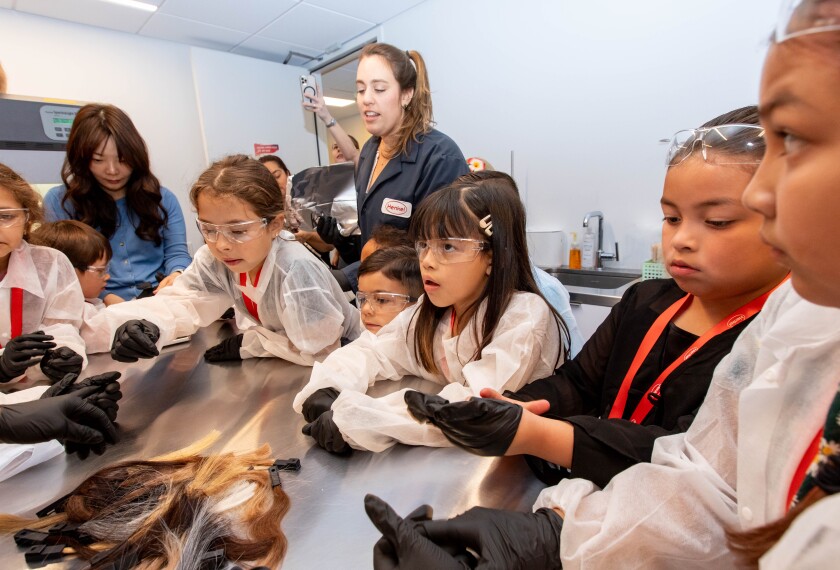The Australian government recently appointed a Women in Science Ambassador to promote girls’ and women’s engagement in STEM and in medicine. This is one of many programs that have been implemented around the world to promote girls’ interest in these fields and women’s pursuit of them as careers. These programs are based on the incorrect belief that girls and women are severely underrepresented in science, technology, engineering, and math. Similar numbers of women and men earn STEM degrees in the United States and have done so for decades.
What is correct is that men and women choose different types of degrees. Women are overrepresented in psychology and the biological and social sciences, and have now achieved parity in medical school and dominance in veterinary medicine. With the exception of chemistry, women are underrepresented in the physical, mathematical, and computer sciences as well as in engineering.
In other words, women who are interested in science tend to gravitate toward non-organic STEM fields that deal with living things and men to fields that deal with inorganic or nonliving things. The gender difference between interest in people or living organisms versus machines and tools has been observed for decades, is quite large, and influences occupational choices. Given this, women’s and men’s choice of different scientific disciplines is not at all surprising.

What is surprising is that many programs to increase girls’ and women’s engagement in STEM are partly based on an uncritical assumption that the underlying causes include social factors, such as stereotype threat or implicit bias. Stereotype threat occurs when one is confronted with situations that trigger negative stereotypes (e.g., “women are not as proficient at math as men”) that, in turn, result in a preoccupation about potentially confirming the stereotype. The preoccupation is thought to undermine actual performance, even when the stereotype is incorrect. Implicit bias involves an unconscious association between group membership (e.g., gender) and stereotypical attributes (e.g., “women don’t engage in science”) that can, in theory, result in prejudicial behavior toward individuals within that group.
There are, however, serious concerns in the scientific literature about whether any such effects can be accurately measured and whether they significantly influence behavior or beliefs. If stereotype threat, implicit bias, and the related microaggressions are not substantively contributing to the STEM gender gap, then associated interventions are akin to chasing ghosts; they are not really there, and thus cannot be corralled.
One of our recent studies casts further doubt on these types of explanations. We found that the percentage of women obtaining degrees in non-organic STEM fields is particularly low in gender-equal nations. Finland, for instance, excels in gender equality. Its adolescent girls outperform boys in science, and it ranks highly in educational performance. These are exactly the social conditions that should result in a narrowing of the gender gap in these fields, but they have not.
In fact, Finland has one of the world’s largest gender gaps in college degrees in non-organic STEM fields. Algeria, on the other hand, is exemplary, where more than 40 percent of the non-organic STEM degrees are earned by women, often for economic reasons. These are not extreme cases, as the pattern of fewer women earning degrees in these fields in liberal, wealthy, and gender-equal countries is found throughout the world. We explored why this might be the case.
First, we found that there are just as many girls as boys who are capable of success in STEM fields. But, we also found that, in their responses to Program for International Student Assessment questions in 2015, boys reported a stronger interest in science than girls (the available options were largely skewed toward the natural sciences), and this explained part of the gender gap in non-organic STEM degrees. In a more unusual analysis, we identified students’ academic strengths—that is, whether science, math, or reading was their best subject. This is important because these strengths influence college and occupational choices. Throughout the world, many more girls than boys have reading as their best subject, and many more boys than girls have math or science as their best subject. The gender differences in academic strengths explained even more of the gender gap in non-organic STEM degrees than did interest in science.
At the same time, there are more capable girls who have math or science as their best subject than are obtaining degrees in non-organic STEM fields. Efforts to increase the numbers of women in these fields might be more effective if they focused on adolescent girls with math or science as their best academic subject and an interest on how nonliving things work.




